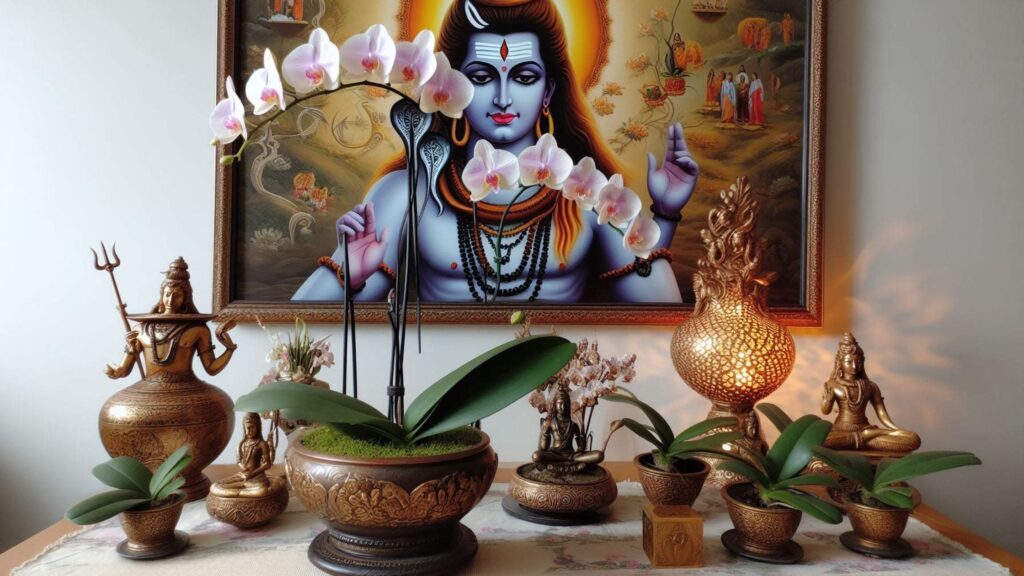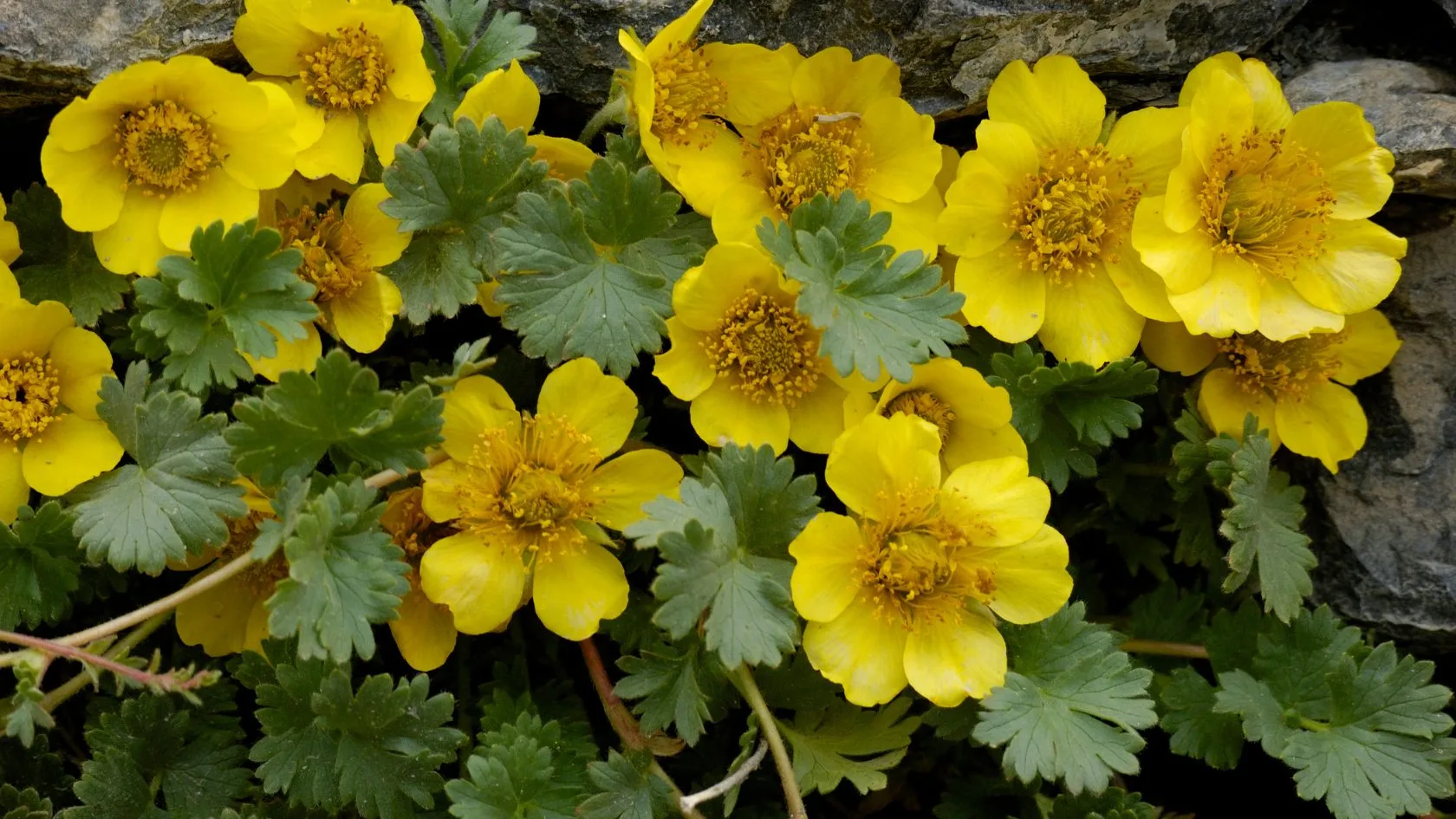They are part of the order Asparagales, which also includes asparagus and iris families. Orchids are popular both in the wild and as cultivated plants due to their intricate and beautiful flowers.

Types of Orchid Plants
Benefits of Orchid Plant
Let’s explore why owning an orchid might be the perfect addition to your home:
Easy Care and Maintenance: Orchids are relatively easy to care for and require minimal maintenance. Whether you’re a first-time gardener or an experienced one, orchids are a great choice. With their vibrant colors and different sizes, there’s an orchid to suit everyone’s tastes.
Air Purifying Qualities: Orchids help reduce pollutants in the air, making them a great choice for homes and offices. By absorbing carbon dioxide and releasing oxygen, they contribute to better air quality
Traditional Medicine Uses: In ancient Chinese history, orchid flowers stems, and bulbs were used in traditional Chinese medicine.
Long Blooming Periods: Orchids can produce beautiful blooms that last for weeks with proper care. The plants can live for years, offering a unique and rewarding experience.
Luck and Prosperity: Orchids are believed to bring luck and prosperity to their owners. While we might prefer them as houseplants, some cultures believe orchids have healing properties for fever, diabetes, kidneys, and lungs. Adding a bit of extra luck to your life
Disadvantages of Orchid plant
While orchids are undeniably beautiful, there are a few things to consider before bringing one home:
Specificity: Unlike many houseplants that can adapt to a range of conditions, orchids can be particular about their environment. They require specific light levels (indirect), humidity levels (high), and watering schedules (not soggy). This can be a challenge for some plant owners.
Fastidious care: Meeting their needs can involve more effort than some people expect. Overwatering, underwatering, or incorrect light can quickly lead to problems like stunted growth, bud drop, or root rot.
Blooming cycles: Orchids have specific blooming cycles, and their flowers may only last for a few weeks or months. The time between blooms can vary depending on the species and care.
Pest susceptibility: While not the most prone to pests, orchids can be susceptible to mealybugs, scale, and fungal diseases if not properly cared for.
Price: Compared to some common houseplants, orchids can be more expensive, especially for rarer varieties.
Orchid Plant Care
Here’s the basic care rundown for your orchid plant:
Light: Orchids like bright, indirect light. Think of the morning sun or filtered light through a sheer curtain. Direct sunlight can scorch the leaves.
Water: Orchids hate soggy roots. Let the potting mix dry out completely between waterings. You can check by sticking your finger in the mix – if it feels dry, it’s watering time. Watering methods include soaking the pot in lukewarm water for 10-15 minutes, then letting it drain thoroughly. Avoid getting water on the leaves or crown.
Humidity: Ideally, orchids prefer high humidity (around 50% or more). You can increase humidity by placing the orchid on a pebble tray filled with water or misting it regularly (avoiding the flowers). Putting plants in groups can also assist in increasing humidity.
Temperature: Warm temperatures are key! Target a temperature range of 60 to 80 degrees Fahrenheit. Avoid cold drafts or placing them near air vents.
Fertilizer: During the growing season, fertilize your orchid once a month with a diluted orchid fertilizer. Opt for a balanced fertilizer or one high in nitrogen during growth and lower in nitrogen when flowering.
Repotting of Prchid Plant
Here’s a step-by-step guide to repotting your orchid:
Timing: The best time to repot an orchid is right after it finishes flowering when it begins to produce new growth.
Signs It’s Time to Report: The plant is growing over the edge of the pot.
The roots are overgrown and stretch out from the bottom of the pot.
The potting medium has degraded
Materials Needed: A new pot, 1-2 inches larger in diameter than the current one.
Orchid potting mix, typically a blend of bark, charcoal, and perlite
Steps: Water the orchid a day before repotting to reduce stress.
With extreme caution to avoid damaging the roots, remove the orchid from its present pot.
Clean the roots and trim away any dead or rotting parts with sterilized scissors.
Place the orchid in the new pot and fill it with the fresh potting mix, ensuring the base of the leaves is just below the rim.
Water the orchid well after repotting
Orchid Plant Disease
Here are some common orchid diseases and how to recognize and address them:
Root Rot:Cause: Root rot is often caused by overwatering or poor drainage. Fungi (such as Rhizoctonia) thrive in moist, poorly aerated conditions.
Symptoms: Yellowing or wilting leaves, mushy or discolored roots.
Treatment and Prevention: Inspect roots regularly by gently removing the orchid from its container.
Trim diseased roots back to healthy tissue.
Repot into fresh orchid bark for better drainage
Brown Rot:Cause: Brown rot (caused by Erwinia bacterial species) swiftly infects orchids, especially in high humidity and warm temperatures.
Orchid Plant Online
Here are a few options:
Amazon: Amazon offers a wide variety of orchid plants from different sellers. You can find everything from beginner-friendly orchids to rare and exotic varieties.
Etsy: Etsy is another popular platform where you can find orchid plants from independent sellers. You might find unique and specialty orchids here.
The Home Depot: Home Depot’s website often has a good selection of orchid plants available for purchase online, along with care tips and advice.
Propagation of Orchid Plant
Plant Division: This method involves dividing a larger orchid plant into smaller sections. Each section can then be potted separately to grow into a new plant. This is also known as rhizome propagation and works well with sympodial orchids
Back Bulbs: Some orchids produce back bulbs, which can be removed and potted to grow new plants.
Keikis: These are baby plants that sometimes grow on the flower spike or stem of the orchid. Once they have developed roots, they can be cut off and potted individually.
Aerial Roots: Monopodial orchids like Phalaenopsis and Vanda grow aerial roots, which can be used for propagation.
Stem Cuttings: For some orchids, you can take stem cuttings and plant them to grow new orchids
Orchid Plant Vastu
Orchids are considered auspicious in Vastu Shastra, and they hold various positive meanings. Here’s how orchids are associated with Vastu:
Symbol of Prosperity and Abundance: Orchids symbolize prosperity, abundance, and fertility.
According to Vastu, gifting orchid plants or flowers to newlyweds or parents is considered fortunate.
Placing orchids in your home attracts positive energies.
Color Significance: Different colored orchids have distinct meanings: Purple Orchids: Represent royalty, authority, and dignity. They also symbolize deep admiration and respect.
Blue Orchids: Associated with rare, unique, and uncommon beauty. Ideal for people close to your heart.
White Orchids: Signify purity, innocence, and elegance. Perfect for weddings and spiritual spaces.
Pink Orchids: Personify happiness, fertility, playfulness, and grace. Great for expecting mothers and growing families.
Placement: To enhance positive energy, place orchids in the southwest direction of your room or home.
Orchids create a strong spiritual aura and protect against evil eyes
Blue Orchid Plant
Artificially Altered Blue Orchids:
The blue orchids commonly found in floral departments are not naturally blue. While several species of rare, blue-flowered orchids do exist, common phalaenopsis and dendrobium orchids do not naturally produce blue flowers. Instead, they have been altered with dye to achieve the blue color.
Orchid plant for Pets
Here are some details about orchids and their safety for pets:
Dog-Friendly Orchid Varieties: Also known as the Queen of Orchids, this tropical epiphyte grows on trees and gets nutrients from the air, water, and decaying plant matter. When cultivated properly, Brazilian Orchids can have various colors except true blue and black.
California Pitcher Plant: This orchid traps and digests insects as a nutrient source. Its large tubular leaves attract insects and keep them from escaping. It’s also known as the Cobra Lily or Cobra Plant.
Crimson Cattleya: Native to northeastern Brazil, this orchid is another dog-friendly variety.
How to Buy Orchid Plant
Here’s a guide on how to buy a healthy orchid plant:
Varieties: Popular options include Phalaenopsis (Moth Orchid) for beginners, Dendrobium for variety, and Cattleya for showy flowers. Consider your experience level and desired flower color.
Blooming vs Non-blooming: Blooming orchids are lovely for immediate impact, but non-blooming ones might be more budget-friendly and give you the satisfaction of nurturing them to bloom.
Orchid Plant Names in Other Languages
Here are some translations of “orchid” in various languages:
- Albanian: orkide
- Chinese Simplified: 兰花 (lánhuā)
- French: orchidée
- German: Orchidee
- Hindi: आर्किड (aarkid)
- Italian: orchidea
- Japanese: 蘭 (ran)
- Korean: 난초 (nancho)
- Portuguese: orquídea
- Russian: орхидея (orkhideya)
- Spanish: orquídea
- Turkish: orkide
Conclusion
they are a symbol of luxury, beauty, and strength. They require specific care and attention, but their captivating presence is worth the effort. Whether you’re an avid gardener or simply an admirer of their elegance, orchids offer a touch of nature’s splendor to any environment.
FAQs of orchid plant
1. How many types of orchids are there?
Ans: Numerous, including Phalaenopsis, Cattleya, and Dendrobium.
2. How can orchids help humans?
Ans: Air purification, medicinal uses, and aesthetic beauty.
3. Are orchids in danger?
Ans: Yes, due to habitat loss and illegal trade.
4. How do you keep an orchid alive indoors?
Ans: Moderate sunlight, proper watering, and well-draining potting mix.
5. How do you keep an orchid alive indoors?
Ans: Avoid overwatering, provide humidity, and fertilize regularly.






I’m truly enjoying the design and layout of your website. It’s a very easy on the eyes which makes it much more enjoyable for me to come here and visit more often. Did you hire out a developer to create your theme? Superb work!
Informative articles, excellent work site admin! If you’d like more information about Cosmetic Treatment, drop by my site at UQ5 Cheers to creating useful content on the web!